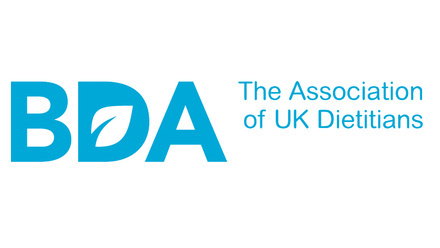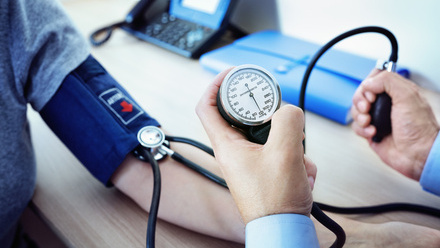Around 1 in 5 women attending antenatal care in the UK are now obese and in the current obesogenic environment, with an increasing number of obese teenagers reaching child-bearing age, this figure is likely to increase.1,2 (See references below) Amanda Avery describes one study that aimed to help pregnant women manage their weight
Pregnancy is a significant factor in the development of obesity irrespective of pre-pregnancy weight; women with high weight gain during pregnancy tend to retain more weight at 15 year follow-up.3 Women who have had a high gestational weight gain (GWG) are more likely to commence their next pregnancy with a higher body mass index (BMI).
Having a higher BMI at the start of a pregnancy and excessive GWG will increase the health risks to both the mother and infant. 4,5,6 There are various complications for the mother .7,8,4 and there various increased risks for the infant including shoulder dystocia, birth defects, fetal and neo-natal death and stillbirth .9,10, 11, 12 Some of the birth risks are related to the increase in large for gestational age babies. Antenatal care costs may be 5–16 fold higher in overweight and obese women.13
Scott-Pillai et al (2013) 14 , identified that for women having a BMI at booking of between 35- 40 kgm-2 there was a 6.0 times greater risk of developing gestational diabetes, a 1.8 increased risk of requiring a caesarean section, a 2.0 times greater risk of the baby suffering shoulder dystocia and a 2.2 times greater risk of the baby being stillborn. A healthy BMI of 20-25 was used as the standard for comparison.
Raising the issue of weight
Overweight, obesity and excess GWG are the most probable risk factors for the increase in maternity complications, but there is limited evidence to determine what a healthy weight gain should look like for the already obese mother. Kiel et al (2007)15 found that, for women with a baseline BMI ≥40 kgm-2, outcomes for preeclampsia, caesarean delivery and large for gestational age (LGA) babies were much improved if the mothers lost between 2-9lbs or even lost ≥10lbs. Only in the case of small for gestational age (SGA) babies was there a slightly impaired outcome with gestational weight losses > 10lbs., The data showed minimal risks for all four of their outcomes, for example where the risk of LGA and SGA births lines intersect, equated to a weight gain of 10-25lbs for class1 (BMI≥30) obese women, a gain of 0-9lbs for class 2 (BMI≥35) obese women and a loss of 0-9lbs for class3 (BMI≥40) obese women.
The role of healthcare professionals
Healthcare professionals (HCPs) are often uncomfortable raising the issue of maternal obesity,16 referral options and evidence-based interventions to tackle obesity during pregnancy are limited 17 UK guidelines on appropriate weight gain during pregnancy are also lacking but the American Institute of Medicine (IOM) guidance is often used with the BMI-specific recommended weight gains of 7.0-11.5 kg for women overweight and 5.0-9.0 kg for women obese at the start of pregnancy.18 There is no separate guidance for women who commence pregnancy morbidly obese with a BMI ≥40kgm-2
The National Institute for Health and Clinical Excellence (NICE) 2010 guidance is clear that restrictive diets and weight loss during pregnancy should be avoided.19 There is some evidence suggesting that inadequate GWG may be a risk factor for intrauterine growth restriction, preterm birth, low birth weight and perinatal mortality but with none of these studies examining the effects in an already obese pregnant population.20,11Similarly none of these studies considered dietary or lifestyle habits which may have influenced the amount of GWG.
Thangaratinam et al 21 concluded that dietary and lifestyle interventions can reduce maternal weight gain and improve outcomes for both mother and baby. Albeit, the overall evidence rating was low to very low for important outcomes such as pre-eclampsia, gestational diabetes, gestational hypertension and preterm delivery.
Since this review a number of published papers have looked at the efficacy and safety of interventions. The LIMIT study, 22 where healthy eating and exercise advice was offered to overweight or obese pregnant women showed a significant reduction in the number of babies born over 4kg in weight. Whilst the advice to adopt a healthy diet and regular exercise during pregnancy led to an 18% reduction in the chance of a baby being born over 4kg, there was no significant difference in the maternal weight change between the intervention and control groups. Also the antenatal lifestyle advice used in the LIMIT study did not reduce the risk of delivering a baby weighing above the 90th centile for gestational age and sex or improve other maternal pregnancy and birth outcomes measured.
The HELP intervention
The Healthy Eating and Lifestyle in Pregnancy (HELP) intervention was developed by a senior midwife, with support from a dietitian, as an intervention for obese pregnant women. It aimed to equip women with the knowledge, and skills to control weight gain as well as maintaining a healthy lifestyle postpartum, through healthy eating and physical activity. It was delivered through a weekly group held at the antenatal clinic, facilitated by an experienced midwife and Slimming World (SW), a commercial weight management organisation.
The study examined feasibility, acceptability, recruitment and retention as well as other key outcomes.23 Recruitment was slow initially, with members of the maternal health care team finding it difficult to raise the issue of obesity during pregnancy. Training and resources were required to help support staff to raise the importance of weight management.
This small feasibility study of 148 women, with an average start BMI at booking of 37.4kgm-2, 39 women did lose some weight during pregnancy. However, this did not increase the likelihood of them having a SGA baby; indeed it may have reduced the risk, given no babies were born to this group of mothers with a birth weight below 2500g. They also appeared to be less likely to have a LGA or macrosomic baby weighing greater than 4000g.
A number of women were lighter post-delivery than when joining the group. For those women attending the group within three weeks of giving birth the mean GWG 4.3kg was just slightly less than the 5.0-9.0kg recommended by the IOM for obese women. For women who returned to the group after having had their baby the mean weight gain during pregnancy was 3.3kg with a maximum weight gain of 13.2kg recorded. In these small sub-groups there were not any adverse effects to the mother or the baby through what may be described as an ‘inadequate’ weight gain.
For this study no data were collected about actual dietary changes made as a result of the intervention. However any woman losing above a certain amount of weight was required to complete a food diary. Thus there is some anecdotal information available.
HELP empowered the pregnant women believe that they possessed the necessary skills to change their eating and activity behaviours This was to be achieved through information sharing, supporting self-efficacy, modelling of behaviours and social support. In the non-pregnant population social support is associated with improved weight management. (Elfhag & Rossner, 2005).24
The social support may have been one explanation for the successful breast-feeding rates, both at birth and 28 days post-delivery, in those women attending the HELP group. At the time of date collection the local breast-feeding rates were 52% at birth and 44% at the five to six day screening data compared to the respective figures of 89% and 70% for the HELP study group - with the latter figure of 70% being recorded 28 days post-delivery.
There is a need for scalable interventions which support both overweight/obese pregnant women and pregnant women with a healthy starting BMI to prevent excessive GWG and encourage healthy lifestyles. This may have a significant impact on both maternal and infant health and perhaps a longer lasting impact on family health and should therefore be high on the public health agenda.
References:
1Government Office for Science, 2007. Tackling OBESITIES: Future Choices. London 2007.
2 Heslehurst, N., Rankin, J., Wilkinson, JR., Summerbell CD. 2010 ‘A nationally representative study of maternal obesity in England, UK: trends in incidence and demographic inequalities in 619 323 births, 1989–2007’. International Journal of Obesity 34: 420–8
3 Linné, Y., Dye, L., Barkeling, B., Rossner, S., 2004. Long-Term Weight Development in Women: A 15-Year Follow-up of the Effects of Pregnancy. Obesity Research, 12(1166-78).
4 Bhattacharya, S., Campbell D., Liston W., Bhattacharya S., 2007. ’Effect of Body Mass Index on pregnancy outcomes in nulliparous women delivering singleton babies’. BMC Pub Health, 24(7), 168.
5 Siega-Riz AM, Viswanathan M, Moos MK et al. (2009) A systematic review of outcomes of maternal weight gain according to the Institute of Medicine recommendations: birthweight, fetal growth, and postpartum weight retention. American Journal of Obstetrics and Gynecology 201:339 e1–14
6 CMACE/Centre for Maternal and Child Enquires and the Royal College of Obstetricians and Gynaecologists (2010) Joint guideline – Management of women with obesity in pregnancy. London: Centre for Maternal and Child Enquires and the Royal College of Obstetricians and Gynaecologists
7 Sebire, N., Jolly, M., Harris, J., 2001. Maternal obesity and pregnancy outcome: a study of 287,213 pregnancies in London. International Journal of Obesity Related Metabolic Disorders, 25(8), 1175-82.
8 Usha Kiran, T., Hemmadi, S., Evans, J., 2005. Outcome of pregnancy in a woman with an increased body mass index. . International Journal of Obstetrics and Gynaecology, 112, 768-72.
9 Robinson, H., Tkatch, S., Mayes, DC., Bott, N., Okun, N., 2003. ‘Is maternal obesity a predictor of shoulder dystocia?’ Obstetrics & Gynaecology 101, 24-27
10 Chu, SY., Kim, SY., Lau, J., 2007. ‘Maternal obesity and risk of still birth: a meta-analysis.’ Am. J. Obstetric Gynaecology 197: 223-8
11 Rasmussen KM & Yaktine AL, editors. Committee to Reexamine Institute of Medicine Pregnancy Weight Guidelines (2009) ‘Weight gain during pregnancy: re-examining the guidelines’. American Institute of Medicine.
12 Stothard, KJ., Tennant, PWG., Bell, R., Rankin, J., 2009. ‘Maternal overweight and obesity and the risk of congenital anomalies: a systematic review and meta-analysis.’ JAMA 301(6) 636 -650
13 Heslehurst, N, Lang, R, Rankin, J., Summerbell CD. 2007 ‘Obesity in pregnancy: a study of the impact of maternal obesity on NHS maternity services.’ British Journal of Obstetrics and Gynaecology 114: 334–42
14 Scott-Pillai, R., Spence, D., Cardwell, CR., Hunter, A., Holmes, VA., 2013 ‘ The impact of body mass index on maternal and neonatal outcomes: a retrospective study in a UK obstetric population, 2004-2011.’ British Journal of Obstetrics and Gynaecology 8:932-9
15 Kiel, DW., Dodson, EA.,Artal, R., Boehmer, TK., Leet, TL. 2007 ‘Gestational weight gain and pregnancy outcomes in obese women; how much is enough?’ Obstetrics & Gynecology 110(4) 752-758
16 Smith DM., Cooke, A., Lavender, T. 2012. ‘Maternal obesity is the new challenge; a qualitative study of health professionals’ views towards suitable care for pregnant women with a Body mass index ≥30kg/m2.’ BMC Pregnancy and Childbirth 12: 157
17 Dodd, JM., Crowther, CA., Robinson JS., 2008. ‘Dietary and lifestyle interventions to limit weight gain during pregnancy for obese or overweight women: a systematic review.’ Acta. Obstet. Gynecol. Scand. 87: 702-706
18 Institute of Medicine and National Research Council, 2009. ‘Weight gain during pregnancy: re-examining the guidelines’. National Academies Press. Washinghton, DC.
19 National Institute for Clinical Excellence (NICE), 2010. Public Health Guidance 27: Weight management before, during and after pregnancy.
20 Carmichael, SL & Abrams, B., 1997, ‘A critical review of the relationship between gestational weight gain and preterm delivery’ Obstetrics & Gynaecology, 89(5) 865-873
21 Thangaratinam, S., Rogozinska, E., Jolly, K., Glinkowski, S., Roseboom, T., Tomlinson, JW., Kunz, R., Mol, BW., Coomarasamy A., Khan, KS., 2012 ‘Effects of interventions in pregnancy on maternal weight and obstetric outcomes: meta-analysis of randomised evidence’ British Medical Journal 344 e2088
22 Dodd, JM., Turnbull, D., McPhee, AJ.,Deussen, AR., Grivell, RM., Yelland, LY., Crowther, CA., Wittert, G., Owens, JA., Robinson, JS., 2014. ‘Antenatal lifestyle advice for women who are overweight or obese: LIMIT randomised trial’ BMJ 348:g1285
23 Jewell et al, 2014, The healthy eating and lifestyle in prganancy feasibility study. British Journal of Midewifery, 22(10) 625-634
24 Elfhag K, Rössner S. 2005 ‘ Who succeeds in maintaining weight loss? A conceptual review of factors associated with weight loss maintenance and weight regain’. Obes Rev; 6(1):67-85.
25 Cedergren MI., 2004 ‘Maternal morbid obesity and the risk of adverse pregnancy outcome.’ Obstetrics & Gynaecology 103: 219-24
26 Kanagalingam, M., Forouhi, N., Greer I., Sattar, N., 2005. ‘Changes in booking body mass index over a decade: retrospective analysis from a Glasgow Maternity Hospital’. British Journal of Obstetrics and Gynaecology, 112(10), 1431-3.
27 Watkins, M., Rasmussen, S., Honein, M., Botto, L., Moore, C., 2003. Maternal obesity and risk for birth defects. Pediatrics, 111, 5.







